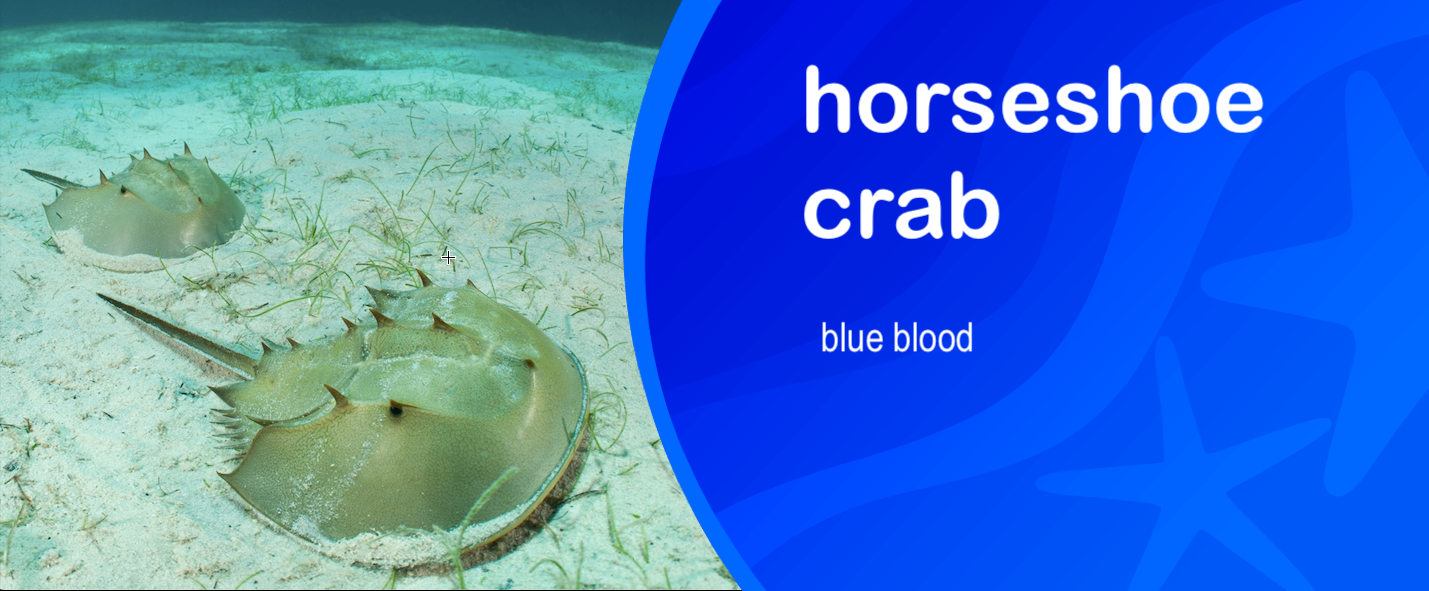

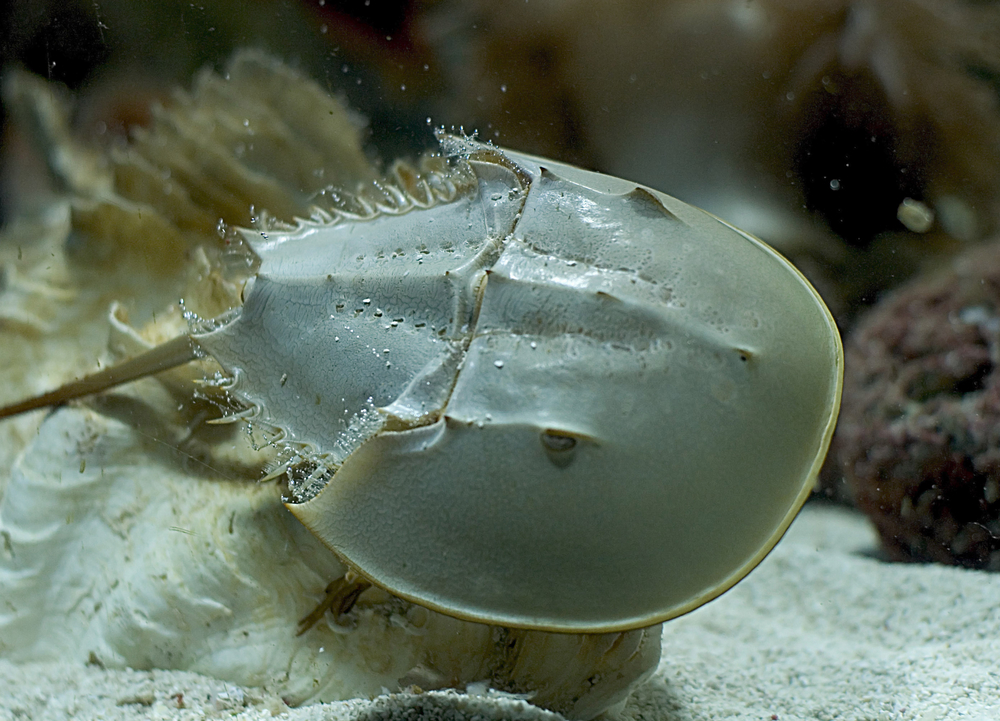
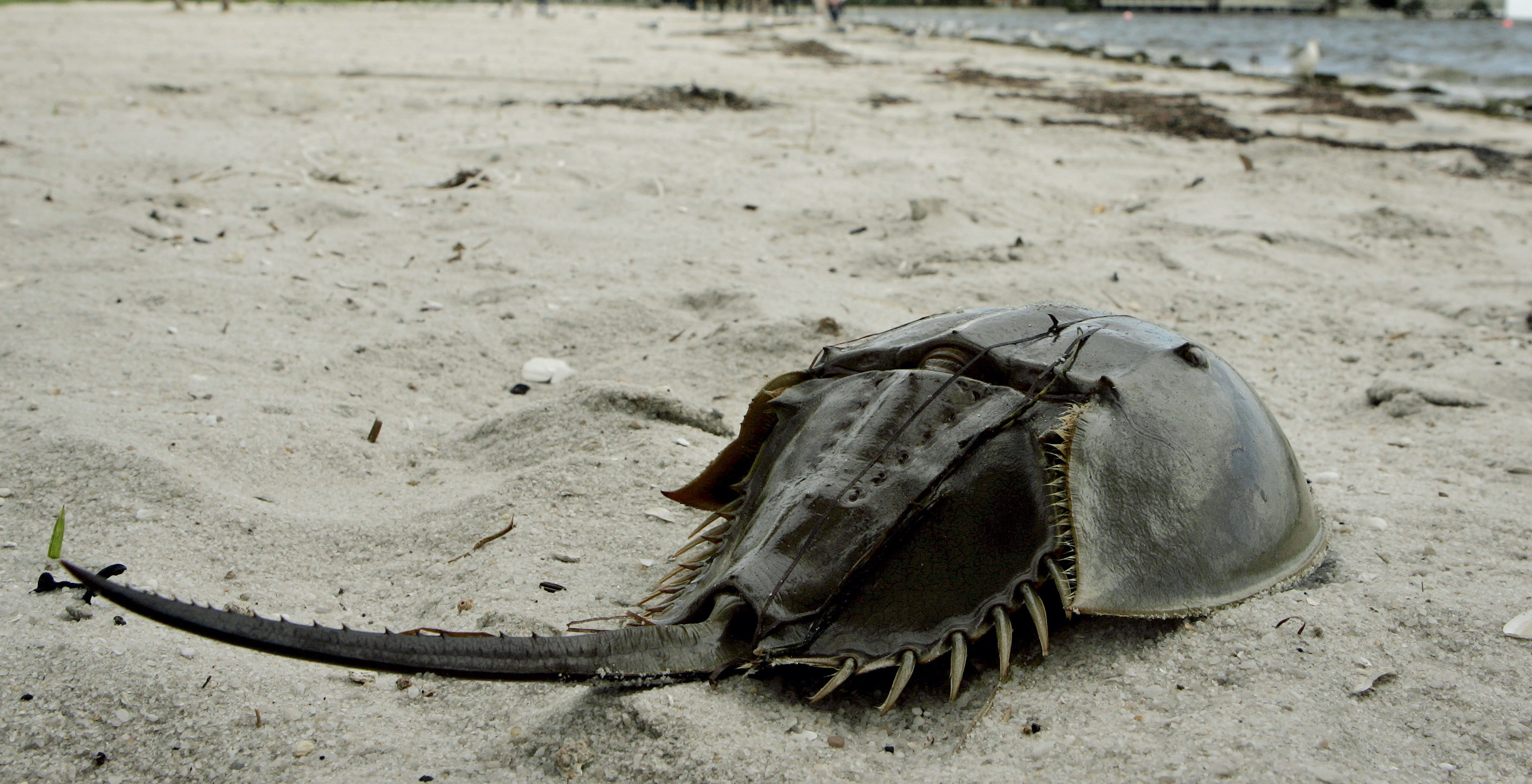
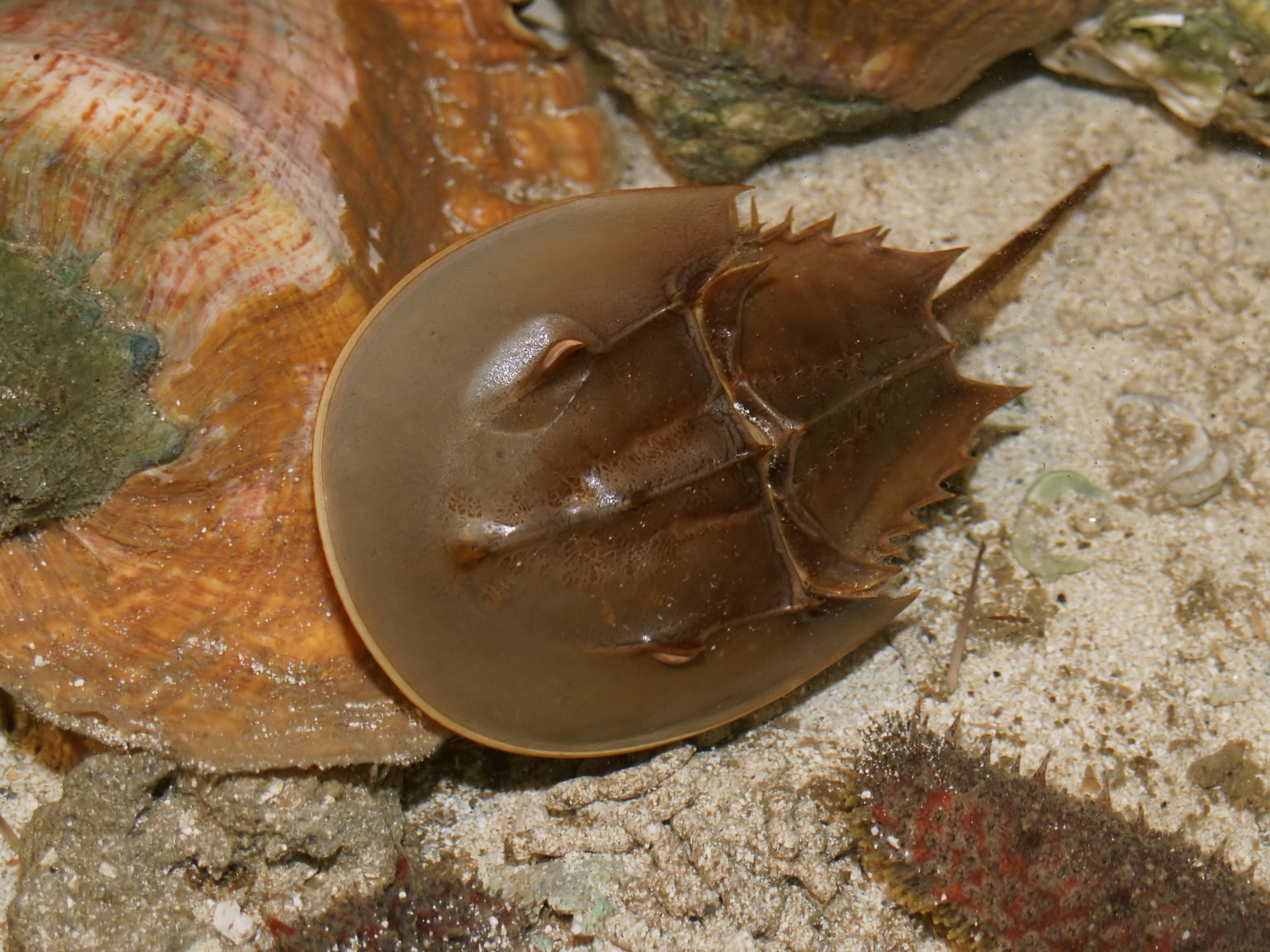
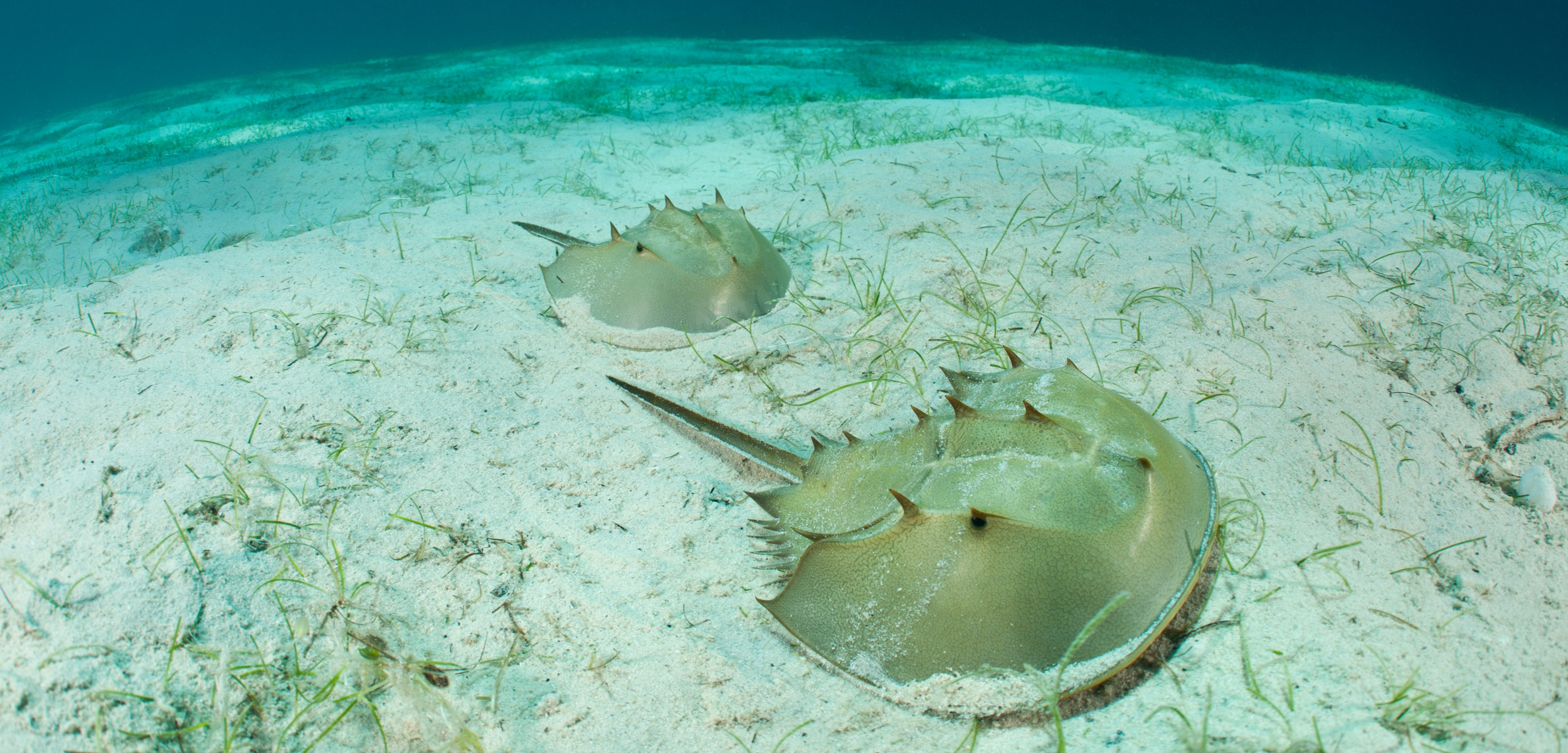
 The horseshoe crab species found around the United States lives in the Atlantic Ocean along the North American coastline. Horseshoe crabs can also be seen along the East and Gulf coasts of the United States and Mexico. |
 Horseshoe crabs are found on warm coastlines and are nocturnal omnivorous scavengers, feeding upon small bivalves, mollusks, worms, dead fish and algae. |
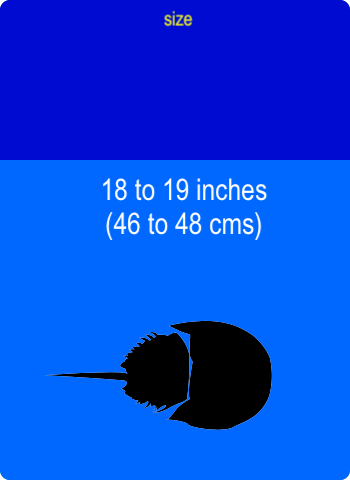
|
Scientists consider this species a “living fossil.” This means that they have survived unchanged for millions of years, about 450 million to be exact! Archaeologists have discovered fossils of these creatures dating back to 450 million years ago.
Horseshoe crab blood is bright blue. It contains important immune cells that are exceptionally sensitive to toxic bacteria. Scientists used these clever blood cells to develop a test called Limulus Amebocyte Lysate, or LAL, which checks new vaccines for contamination.
Horseshoe crab blood is a vital resource to the medical field. It's unique in more ways than one: the blue color and its ability to identify bacterial contamination in small quantities.
Though they do not look particularly complex, the eyes of this creature have some amazing features. They have several different pairs of eyes on different parts of their bodies. Though they do not have superb eyesight, they can detect both visible and ultraviolet light.